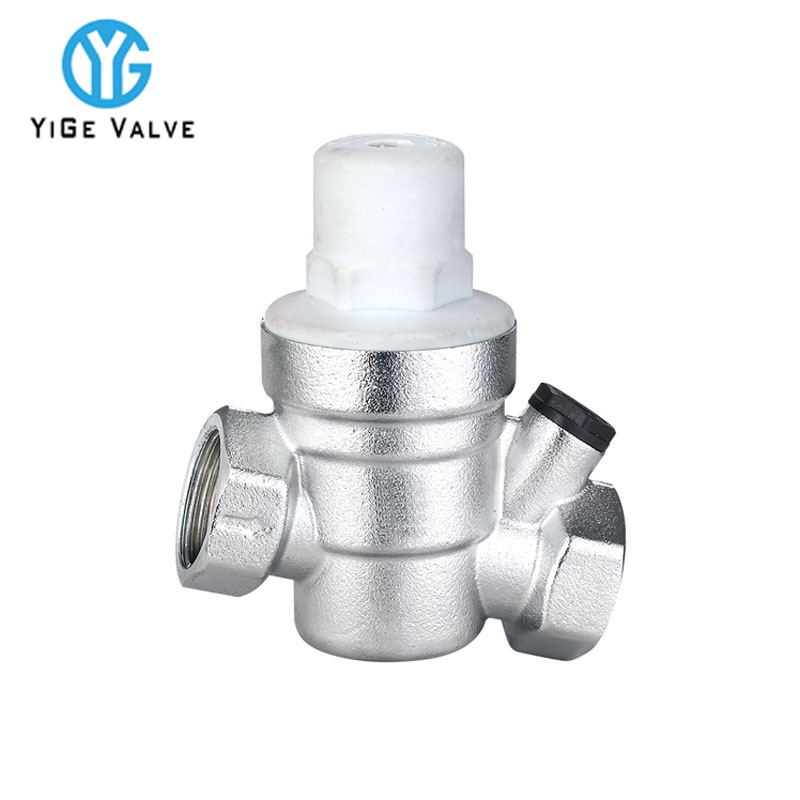Comprehensive Guide to Brass Pressure Reducing Valves: Detailed Description

Introduction
Brass pressure reducing valves, also known as pressure regulators, are critical components in plumbing systems that help control and maintain optimal water pressure. These valves are widely used in residential, commercial, and industrial settings to protect plumbing fixtures, appliances, and pipes from excessive pressure. This comprehensive guide provides a detailed exploration of the structure, materials, working principles, applications, and benefits of brass pressure reducing valves, aiming to enhance user understanding and optimize related content for search engine ranking
Structure and Materials
1. Material Composition:
Brass pressure reducing valves are primarily made of high-quality brass alloys, typically containing 70% to 90% copper. Brass, a combination of copper and zinc, offers excellent corrosion resistance, mechanical strength, and durability. The use of brass ensures that the valves can withstand varying water quality conditions and provide long-lasting performance.
2. Design Structure:
Brass pressure reducing valves consist of key components such as the valve body, diaphragm, spring, adjusting screw, inlet and outlet ports, and pressure gauge connection. The valve body houses the internal mechanisms and controls the flow of water. The diaphragm, made of flexible materials such as rubber or elastomers, responds to changes in pressure. The spring and adjusting screw work together to regulate the desired outlet pressure. The inlet and outlet ports facilitate the flow of water, while the pressure gauge connection allows for pressure monitoring.
Working Principles
1. Pressure Regulation:
Brass pressure reducing valves function by automatically adjusting the incoming water pressure to a predetermined set point. When the water pressure exceeds the desired level, the diaphragm and spring mechanism respond by reducing the opening of the valve, thereby decreasing the outlet pressure. Conversely, if the water pressure drops below the set point, the valve opens wider to maintain the desired pressure.
2. Protection against High Pressure:
One of the primary functions of brass pressure reducing valves is to protect plumbing systems, fixtures, and appliances from excessive pressure. By reducing the incoming water pressure to a safe and manageable level, these valves prevent damage, leaks, and bursts in the system, ensuring the longevity and reliability of the entire plumbing infrastructure.
3. Water Conservation:
Brass pressure reducing valves contribute to water conservation efforts by reducing the flow rate and minimizing water wastage. By maintaining a consistent and controlled pressure, these valves help optimize water usage and promote sustainable practices.
Application Areas
1. Residential Plumbing Systems:
In residential settings, brass pressure reducing valves are commonly installed to regulate water pressure for domestic use. They protect household fixtures, such as faucets, showers, and water heaters, from excessive pressure, ensuring efficient and safe water distribution throughout the home.
2. Commercial and Industrial Facilities:
Brass pressure reducing valves are crucial in commercial and industrial environments, where water pressure management is essential for various applications. They are widely used in hotels, hospitals, manufacturing plants, and irrigation systems to protect equipment, machinery, and pipes from high pressure, ensuring smooth operations and minimizing downtime.
Benefits and Features
1. Pressure Control and Stability:
Brass pressure reducing valves provide precise control over water pressure, ensuring a stable and consistent flow throughout the plumbing system. This feature is essential for maintaining optimal performance and preventing damage to fixtures and appliances.
2. Protection against Water Hammer:
Water hammer, a phenomenon caused by sudden pressure surges, can lead to pipe damage and noise. Brass pressure reducing valves help mitigate water hammer by regulating pressure fluctuations, protecting the system from potential harm.
3. Longevity and Durability:
With their robust construction and use of high-quality materials, brass pressure reducing valves offer exceptional durability and longevity. They can withstand harsh conditions, resist corrosion, and provide reliable performance over an extended period.
Conclusion
Brass pressure reducing valves play a crucial role in maintaining optimal water pressure, protecting plumbing systems, and promoting water conservation. Understanding the structure, materials, working principles, applications, and benefits of these valves is essential for selecting the right products to meet specific needs. Furthermore, optimizing related content
